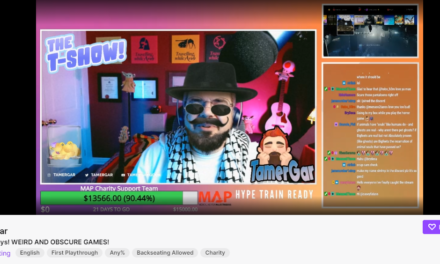
MAY 18, 2021
full tilt
Feature Overload in Social Media Presents Prime Moment for Content Creators
What’s the news?
Lots of new features are coming to lots of social media platforms. The emphasis? Audio and video. And social platforms are rolling out new ways for creators to make money.
What does it all mean?
Well, it’s definitely exhausting. Last November, a headline on Axios read: Social Media Companies Are All Starting to Look the Same. It illustrated the laundry list of social channels – Instagram, Facebook, Twitter, TikTok, YouTube, Pinterest, etc. and how most of them possess similar features – direct messaging, live video, stories, photo filters, public follower counts, etc.
The chart didn’t even list Clubhouse. And building on the popularity of audio, Twitter has launched Twitter Spaces, and Facebook is launching live audio rooms.
The list goes on and on. Too long.
Isn’t that good?
Social media platforms are losing their identity. Every social media platform is adding new lanes (i.e., features). And now they offer almost the same thing to users.
Take Twitter. Its new Tip Jar feature is only the latest addition. Remember when you could only type 144 characters? Now, you can write double that, have live audio conversations, and even host events through the platform. Doesn’t that sound a lot like a couple of other social media platforms you know?
But aren’t there more revenue opportunities for creators?
Yes. But all that can be fool’s gold.
The Tilt Talk and Advice
Why should content entrepreneurs care?
The jumbled features added by social media platforms create murky waters for content creators. Even if you’re up on the latest features, your audience probably isn’t and never will be.
What should you do?
You should focus on your audience, not the social media platform’s shiny new features. It can be enticing to stray off platform or offer a new feature when you see dollar signs. Resist the temptation.
What does that mean?
Stick with the one or two social media platforms where your audience is. Use the new features only when it makes sense for your social media strategy.
For example, if you host a regular Twitter chat, try Twitter Spaces to see if chat participants prefer to talk out loud. But don’t move to a Facebook audio room or Clubhouse.
What else?
As social platforms lose what made them unique, it’s a good reminder to stick with what makes your content brand unique – your content tilt.
Use this as an opportunity to motivate your audience to avoid the social media clutter altogether. Invite them to become subscribers (free and/or paid) so they can access your content directly through their inboxes or a log-in section on your site.
– Ann Gynn
To learn more about the impact of social media’s lack of individuality, and what a content entrepreneur should do, read the longer story.
Job Searcher Finds Content Tilt with Outdoor Facebook Group and Newsletter
Entrepreneur: Ali Carr
Biz: Basecamp Outdoor
Tilt: Jobs for outdoor brands
Channel: Facebook (23.7K)
Rev Streams: Premium newsletter subscriptions, paid job listings, brand partnerships
Our Favorite Actionable Advice
- Cultivate a community: Unlike job boards, Basecamp Outdoor facilitates conversations so people can put faces with names in front of hiring managers.
- Take a dollar: Never underestimate the power of a dollar. A person who paid $1 for a listing eventually led to a conversation between Basecamp and his brand.
- Track to tell the story: Tracking engagement in the newsletter lets Basecamp tell a better story to brands about why they could get or stay involved.
Some of the Story:
Ali Carr had been working for 10 years in media for outdoor brands when she found herself between jobs. She was in several Facebook job board groups, but none filled the niche she was looking for: media jobs for outdoor companies. So she decided to start her own.
She asked 200 of her contacts to join a Facebook group she created, Basecamp: Outdoor Jobs & More. “I invited the people in the group to invite 10 people that they each knew who they thought would be interested in this type of group for the outdoor industry,” she shares.
The Facebook group has grown steadily, almost entirely from word of mouth. In three years, the private group has over 23K members. Brands can post their job offerings and find top talent, job hunters can interact directly with brands. “Unlike a job board where you’re sending your resume off into the ether, you could have a conversation and really put your face or your name in front of the hiring manager,” Ali says.
With the group’s success, Ali and her business partner Jenna Celmer branched out to monetize their work. “I launched a subsidiary group called Basecamp Gear Exchange where people can post outdoor gear. It’s been much less successful than Basecamp Outdoor Jobs. We were charging $1 for listings in there, just testing the waters and someone did pay $1,” she says. But that was it.
In May 2020, they launched a newsletter, Basecamp Weekly. They curate jobs in the outdoor industry, a member spotlight, and gear giveaways. It has free and premium ($3 a month) versions. It now has over 9.5K subscribers and adds about 500 new subscribers a month.
“As our audience has grown, brands have been reaching out to us saying how can we get in front of your audience,” Ali says. Brands now pay $30 to $1K or more for job listings, sponsorships, and gear giveaways.
Ali has been fanatical about tracking member engagement. “Make sure you have clickable elements everywhere within your newsletter so that you can track if people are clicking on things,” she says.
– Kimmy Gustafson
All the Story: To learn more about Ali Carr, the content entrepreneur, and Basecamp Outdoor, the content business, check out the longer story.
Know a content creator who’s going full tilt? DM us or email ann@thetilt.com.
quick talk
Caught on … MarTechRecord
things to know
Money
-
Twitter goes simple: Gone are over 22 ad format names at Twitter. It’s down to five categories: promoted ads, follower ads, amplify (for premium video content), takeover (timelines and explore tabs), and live (joining the real-time conversations. (Twitter)
Tilt take: With advertising easier to navigate, you can market more thoughtfully. It’s important to pick the right format that fits your brand strategy and goals. -
Billions for podcasts: The Interactive Advertising Bureau predicts the industry will see $2B in ad revenue by 2023. (RadioInk)
Tilt take: With the explosive response to podcasting expected to continue, podcasters (and potential podcasters) will need to get creative to stand out in the crowd and attract advertisers.
Audiences
-
Did you really read that?: Before Facebook audiences share content that they haven’t read, they’ll be asked if they really want to share it. Now in testing, about 6% of Android users will see the prompt. (The Verge)
Tilt take: Make sure the first sentences (or even paragraphs) of your content not only match the click-worthy headline but motivate them to keep reading (and sharing). -
Capture in writing: It’s easier to create and edit captions for your YouTube videos with the new captions editor feature. Videos with captions on average see an increase in watch time compared to videos without them. (YouTube Creators)
Tilt take: Captions are helpful to many more people than just those who are deaf or hard of hearing. They resonate with people who can’t watch with the sound on, whether they’re at work or at home near people who are sleeping.
Tech and Tools
-
Harmony on Stage: Discord has had audio awhile. But now, it’s launched Stage Discovery so its users can find live conversations across communities on the app. Later this month? It’ll test ticketed events for Stage Channel conversations. (CNBC)
Tilt take: Be deliberately welcoming to people who come across your community chats. Periodically, break into the conversation to “reset” the room, catching up new members on the topic and conversation. -
Clip it: You won’t need to tell the whole story on YouTube. It’s launching clips (up to 60 seconds) that let you pick a segment and play that loop on the original video page. It will even have its own URL. (Ad Gully)
Tilt take: Pick the short segments that will resonate best with your target audience. They don’t need the whole story, just enough to be enticed to watch the entire video. And often, that isn’t what’s shown in the beginning.
And Finally
-
A voice makes it easier: Ben LeFort says “take your unique viewpoint that is swirling around in your head and easily transcribe it into a well-structured article at lightning-fast speed.” (Writing for Profit)
Tilt take: Invest the time to document your content tilt – what differentiates your voice from the rest. Doing so will enable you to create your content more quickly and successfully. -
Finding the right form: Creators getting into a business should think about forming a business. A limited liability corporation can be a good option to separate personal and business assets. (Entrepreneur)
Tilt take: We’re not lawyers, but we know a good business requires a good legal structure. Plus, given gig worker laws, solo creators might want to make sure to be in business, but not the freelance business.
we’re a stan for Brain Pickings
OK, it’s a little hard to succinctly explain Brain Pickings, a weekly Sunday newsletter, from Maria Popova, who has been publishing it since 2006. So we’ll let Maria do the honors: “It is a record of my own becoming a person – intellectually, creatively, spiritually, poetically – drawn from my extended marginalia on the search for meaning across literature, science, art, philosophy, and the various other tentacles of human thought and feeling.”
One edition explored Virginia Woolf on “finding beauty in uncertainty; lessons on survival, sanity, and connection from the 1964 earthquake.”
Maria recently launched a midweek newsletter (separate signup required) that pulls from her essay archives.
Her first newsletters were sent to seven friends. Today it’s in the Library of Congress Permanent Web Archive.
Brain Pickings also operates a Facebook page (4.8M), which includes an email digest tab, Twitter (947.5K), Instagram (304K), and Tumblr.
Why we’re a Stan: Well, Maria’s been doing this for 15 years. That’s impressive in itself. She repurposes her older content, another smart move. And she makes a living from the newsletter without relying on a third-party platform. Monthly donations can be made directly through her site. She even accepts Bitcoin donations.
the business of content
Hear what Joe Pulizzi has to say, in his Content Inc. podcast, about how most product-first and service-first business models have limited revenue possibilities. With an audience-based, Content Inc. approach, multiple revenue lines and diversification aren’t just possible but probable.
In the latest This Old Marketing, Joe and Robert talk about HubSpot’s quest to be king of all media.
the tilt team
Your team for this issue: Joe Pulizzi, Ann Gynn, Laura Kozak, Dave Anthony, and Mackenzie Pippin, with an assist from Kimmy Gustafson.
Get more of the Full Tilt stories on TheTilt.com.
Know a content creator who’s going full tilt? DM us or email ann@thetilt.com
Was this email forwarded to you? Get your own sub here.
Copyright ©2021 Tilt Media LLC All rights reserved.
Unsubscribe | Update your profile | 17040 Amber Drive, Cleveland, OH 44111





